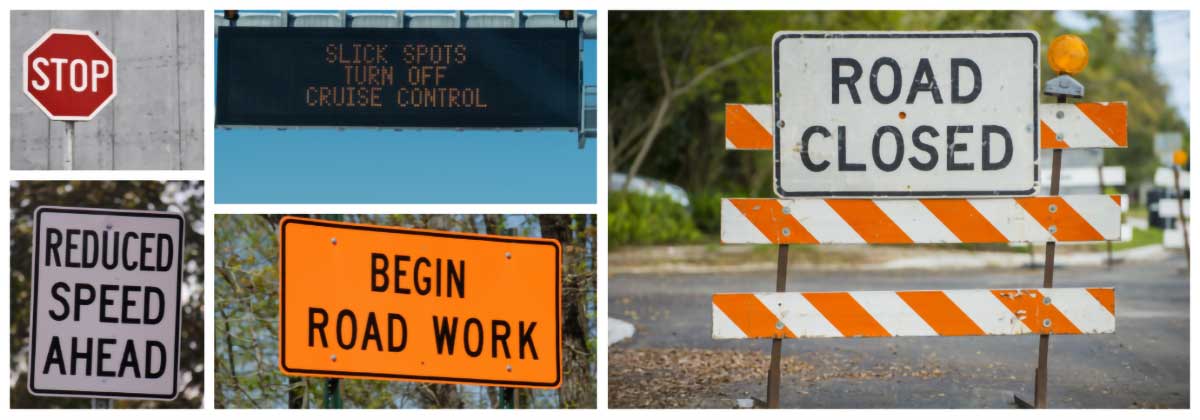Many of us may remember this song that originally hit the AM radio airwaves in 1970—and it’s still relevant today. Even with the modern technology most drivers rely on for navigation we still need to pay close attention to posted signs.
Those of us who are active on social media see the images every day—pictures of trucks wedged under low overpasses or stuck on narrow roads or other places they should have never been. While we’re behind the wheel we also see numerous trucks speeding through construction zones at well over the posted speed limit. What do these incidents likely have in common? The driver was not paying attention to the posted signs.
Our trucks are 13′ 6″ tall—unless you are a Hunt driver hauling an oversize load—yet we still need to pay attention to the signs posted at most overpasses to be sure we will be able to fit, regardless of what a GPS device may be telling us to do. Ignoring the signs can result in a serious disaster that could compromise our safety and result in thousands of dollars in equipment damage.
While many GPS devices have a little window on their screen telling us what the speed limit might be on a particular section of road, drivers are still responsible for paying attention to the speed limit signs. As an example, a GPS may show the normal speed limit to be 65 MPH or higher—yet that area may currently be a construction work zone with posted signs showing a slower speed limit. Ignoring the posted signs could result in what’s known as a serious moving violation, and that has a detrimental effect on a company’s CSA scores. It could also cost you your job—and having that on your MVR may disqualify you from employment as a driver elsewhere.
Restricted routes are everywhere. Whether it’s a road with weight limits or one that doesn’t allow hazardous materials loads unless you are making a delivery along that route—it’s up to us to pay close attention to those signs too. Blindly following a GPS device can land a driver in serious legal trouble in those situations as well. Being caught on a weight-restricted road could result in fines that run well over $1,000 depending on where you are.
While a GPS device can be used as a tool to help us find the streets written down in our directions it is important that we are able to navigate without one. If it malfunctions or stops working altogether we need to have the knowledge and common sense needed to override it.
Ask yourself the honest question: Could you navigate without a GPS by using a truckers atlas in conjunction with written directions and reading road signs to get where you are going? If not, I strongly advise that you learn how to do so. A GPS device failure is not an acceptable excuse for a late delivery, low clearance accident, moving violation, or anything else that could have been avoided by paying attention to the signs posted along your route.



